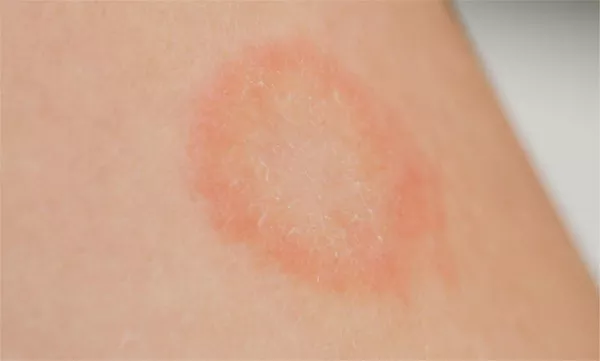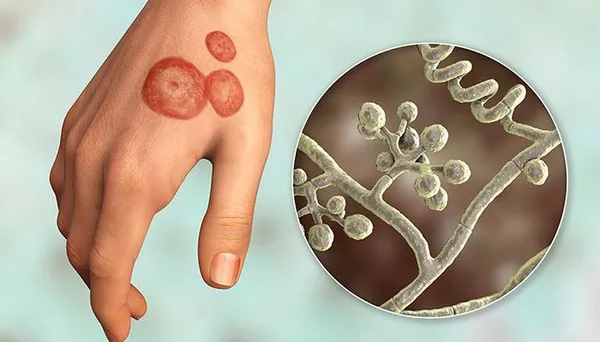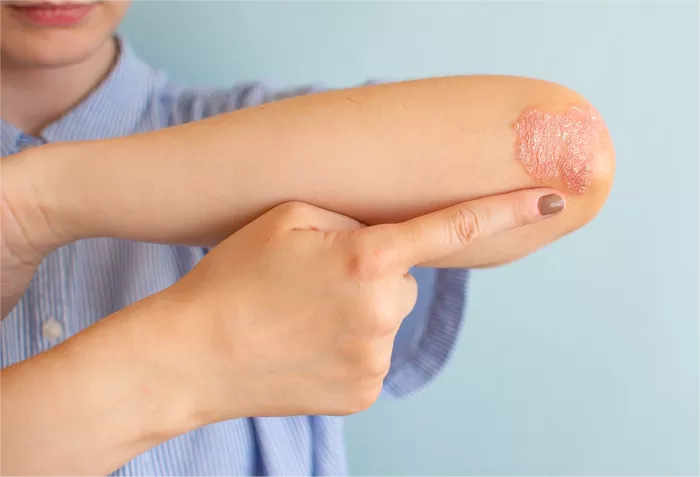Ringworm, despite its name, is not caused by worms but is actually a fungal infection of the skin. It can affect various parts of the body, including the scalp, body, feet, and nails. The characteristic symptoms of ringworm can vary depending on the area of the body affected and the specific fungus involved. One common question that arises about ringworm is whether it leaves white patches. Let’s explore this topic in depth to understand the nature of ringworm infections and their associated symptoms.
Understanding Ringworm Infections
Ringworm infections are caused by a group of fungi known as dermatophytes. These fungi thrive on dead tissues, such as skin, hair, and nails. Despite its name, ringworm doesn’t involve any actual worms. The name “ringworm” comes from the characteristic red, circular rash that often develops on the skin, resembling a ring. This rash is typically itchy and can spread if not treated promptly.
Ringworm can affect different areas of the body, and the symptoms can vary:
1. Ringworm of the Scalp (Tinea Capitis): When ringworm affects the scalp, it can cause hair loss and the formation of scaly patches. These patches may appear red and inflamed and can sometimes result in bald spots. However, ringworm on the scalp does not commonly cause white patches.
2. Ringworm of the Body (Tinea Corporis): This type of ringworm appears as a red, ring-shaped rash on the skin. The rash may be raised and scaly, and it can be itchy. In some cases, as the infection resolves, the skin in the affected area may appear lighter than the surrounding skin, which could be mistaken for white patches.
3. Ringworm of the Groin (Tinea Cruris or Jock Itch): In this type of infection, ringworm affects the groin area, causing a red, itchy rash. The rash can sometimes spread onto the inner thighs and buttocks. It does not typically cause white patches.
4. Ringworm of the Feet (Tinea Pedis or Athlete’s Foot): Athlete’s foot is a common form of ringworm that affects the skin between the toes and the soles of the feet. It can cause redness, itching, scaling, and sometimes peeling skin. White patches are not a typical feature of athlete’s foot.
Do Ringworm Infections Cause White Patches?
The presence of white patches is not a typical feature of ringworm infections. Ringworm typically manifests as red, scaly, and often circular patches on the skin. However, in some cases, particularly after the infection has been treated or is resolving, the affected skin may appear lighter than the surrounding skin. This lighter appearance is due to the healing process and is not the same as white patches caused by other conditions like vitiligo.
Other Conditions That Cause White Patches
It’s important to differentiate ringworm from other conditions that can cause white patches on the skin:
1. Vitiligo: Vitiligo is a skin condition characterized by the loss of pigment-producing cells (melanocytes), resulting in white patches on the skin. Unlike ringworm, vitiligo is not caused by an infection and is not contagious.
2. Tinea Versicolor: This is another fungal skin infection caused by the yeast Malassezia furfur. Tinea versicolor typically presents as white or light-colored patches on the skin, especially on the chest, back, and upper arms. Unlike other types of ringworm, tinea versicolor does cause white patches.
3. Hypopigmentation: Some skin conditions or injuries can lead to a loss of skin pigment, resulting in white or lighter patches. These patches are not caused by fungal infections like ringworm.
Treating Ringworm Infections
Ringworm infections are usually treated with antifungal medications. The specific treatment depends on the location and severity of the infection. Common treatment options include topical antifungal creams, oral medications, or medicated shampoos (for scalp infections).
It’s essential to complete the full course of treatment as prescribed by a healthcare provider to ensure that the infection is fully eradicated. Failing to do so can result in the infection recurring or spreading to other parts of the body.
Preventing Ringworm Infections
Preventive measures can help reduce the risk of developing ringworm infections:
1. Practice Good Hygiene: Wash hands regularly, especially after touching animals or coming into contact with potentially contaminated surfaces.
2. Avoid Sharing Personal Items: Do not share clothing, towels, combs, or other personal items with individuals who have ringworm or other skin infections.
3. Keep Skin Dry and Clean: Fungi thrive in warm, moist environments. Keeping skin clean and dry can help prevent fungal infections like ringworm.
4. Wear Protective Footwear: In communal showers or locker rooms, wear flip-flops or sandals to reduce the risk of athlete’s foot.
Conclusion
In summary, ringworm infections typically do not cause white patches on the skin. The characteristic symptoms of ringworm include red, scaly, and often circular patches, depending on the affected area of the body. While the skin may appear lighter as the infection resolves, this is not the same as white patches caused by other conditions like vitiligo or tinea versicolor. If you suspect a fungal infection or notice any changes in your skin, it’s essential to consult a healthcare provider for proper diagnosis and treatment. Prompt and appropriate treatment can help manage ringworm infections effectively and prevent complications.
Related Topics:

























